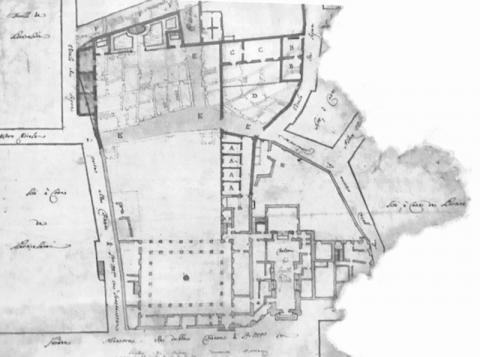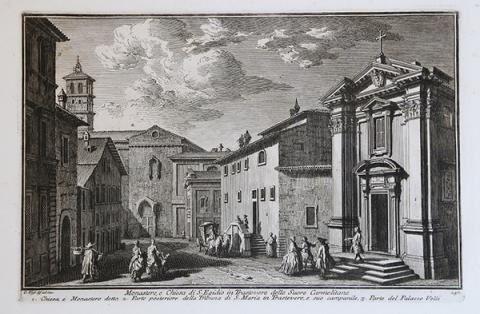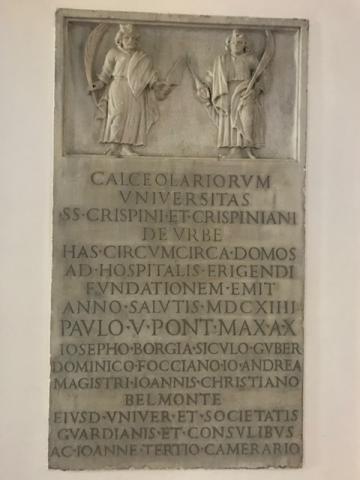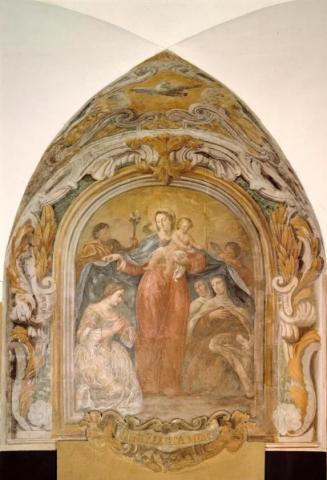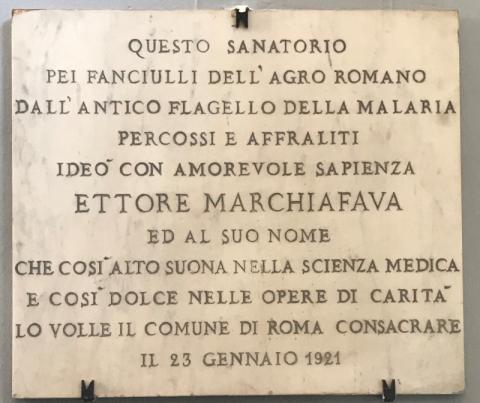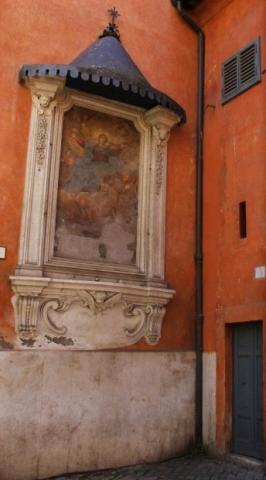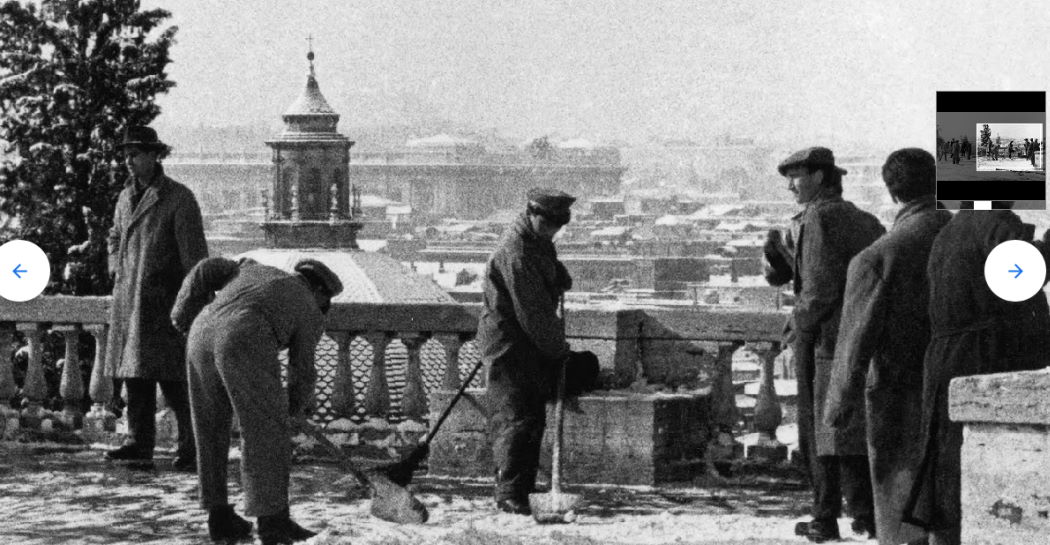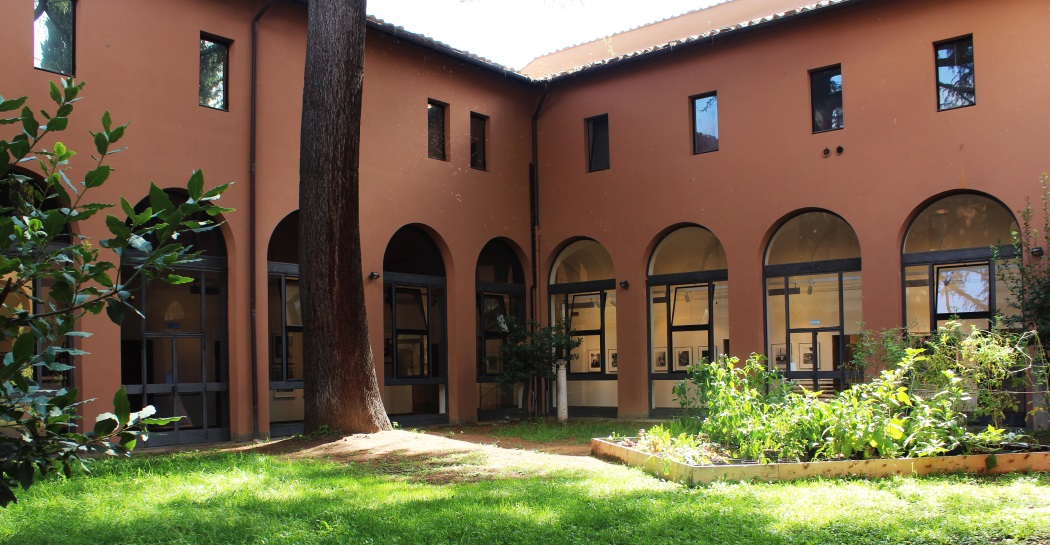The former monastery of Sant'Egidio
The Museo di Roma in Trastevere is located in Piazza Sant'Egidio, in a part of the building that was once the Monastero delle Carmelitane Scalze.
The original part of the monastery was founded at the beginning of the 17th century in the Church of S. Lorenzo in Ianiculo. The first part of the monastery was founded in the first decades of the 17th century at the church of St. Lorenzo in Ianiculo, later restored and dedicated to St. Egidio, and hosted the religious order of the Carmelitane who, in the Trastevere district, since the canonization of St. Teresa of Avila, the mystic of the Monte Carmelo (1622), imposed their order with the construction of several buildings including Santa Maria della Scala, the more important Regina Coeli in Via della Lungara and finally Santa Maria dei Sette Dolori just at the foot of the Gianicolo.
In the course of the centuries, the nuns devoted to the Madonna del Carmelo purchased an extensive urban space in the Rione near Piazza Santa Maria in Trastevere, and transformed the buildings into a single Cloistered Monastery, joined by the church of Santi Crispino e Crispiniano, formerly San Biagio in Trastevere.
A number of objects from the medieval churches that were demolished are preserved in the Cloister of the present museum.
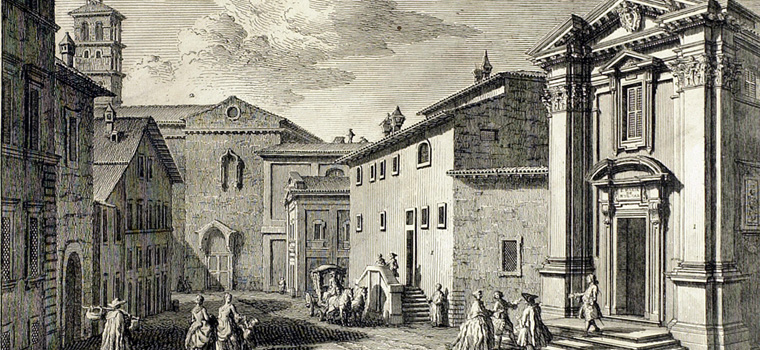
Following the Italian Union and the end of the religious power, the Monastery was acquired by the Italian Government and from 1875 the architectural complex was divided into different properties with different uses; a first part was granted to the City of Rome, who used the building first as Caserma delle guardie municipali, then as the Pretura del V Mandamento with the annexed residence of the Judge; in the early twentieth century it was transformed into a Casa di Contumacia, then became a Lazzaretto per i profughi del terremoto marsicano and finally became a hospice for the infected and wounded soldiers of the Great War. Only during the second half of the twentieth century, following the wishes of the Governor of Rome, the building complex consolidated its public function as a Sanatorio antimalarico infantile and in 1921 it was named after Ettore Marchiafava, an illustrious doctor and senator of the Kingdom, an expert on malaria and Deputy for Health, as recalled by the plaque at the entrance to the Museum.
In the 1960s, the city administration of Rome, having in the meantime acquired the other two sides of the building next to the cloister, undertook to transform the dilapidated structure by putting in place an architectural recovery project designed by Attilio Spaccarelli with the collaboration of Fabrizio Bruno: the intervention was substantial and radical on the monumental complex, bringing to light the architecture commissioned by the nuns in 1723 to Francesco De Sanctis.
Thus, in the spring of 1976, a new Museum of the City of Rome was created with the intention of tracing the popular traditions of eighteenth and nineteenth-century Rome and to house some works of art from the Museo Roma collection.
Between the end of the 1990s and the beginning of the second millennium, the Administration of Rome decided to update the contents of the Museum and, in order to respond to the new reality of the city, it changed its mission, expanding the spaces for the permanent exhibitions in order to tell a more comprehensive story of Italian culture meeting international culture in the broader vision of reciprocity.
In the changing society, the Museo di Roma in Trastevere now stands out in the large thematic photographic exhibitions, recognising its role as not institutionally and traditionally "static", but adaptable and mobile. interactive and focused on the public: a cultural hub at the centre of the city aimed at establishing a dialogue between cultures.




























